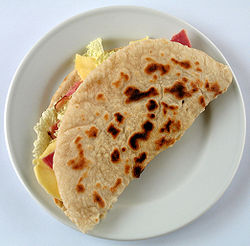The last thing I expected when I moved to Florence, Italy was to lose 12 pounds in a few weeks.
Surveying the gaunt faces during a morning orientation session for a year-long study abroad program, the director noted that many of us had dropped the “Freshman 15,” the weight newcomers shed after putting scruffy Converse sneakers on Italian soil.
Yes, in the land of pasta, pizza, prosciutto and gelato.
How could this be?
Far from some anti-Atkins miracle, it came down to a severe lack of culinary skills. I, for one, had spent my college years in San Francisco staving off hunger by slapping together a few tortillas with cheese with perhaps a guacamole chaser for a meal. Many meals.
This was not going to sustain daily schlepping on foot to the sights of a city with 600 years of art treasures. The nearly constant wooziness — equal parts Stendhal syndrome and hunger — reminded me that I did not know how to live in this beautiful, bewildering place.
Many an intrepid cultural exploration starts at a foreign supermarket and my trek to an Esselunga across town, one of the few supermarkets around then, was a revelation. I had never seen a supermarket that stocked only food.
Just the raw materials. There wasn’t any cereal, frozen pizzas or canned soups. And not a tortilla in sight. I walked the cramped aisles in amazement, wondering how long it would take to grasp the subtle differences in 63,000 different shapes of pasta. The variants on tomato products also mystified me: tubes of tomato paste, a plethora of different types of canned whole tomatoes, cans of tomato pulp.
Left to my own devices, there was only so much crispy burnt garlic and undercooked penne I could eat. Gelato was daily sustenance and even that didn’t keep me from sporting the oversize look nearly a decade before it came into fashion.
Some months later, my Italian language exchange partner Barbara invited me to her hometown Faenza, in Emilia Romagna, for the weekend. I was eager to learn more about regional differences in Italy — Barbara’s slightly lispy accent was already so different from the open-mouthed hah-sounds of the Florentines — and hopefully put on a pound or two thanks to her doting grandmother.
On Saturday night, we drove out to a trattoria that looked like an abandoned farm house where we found two places at the end of a long, communal table and drank fizzy red Lambrusco wine.
Then baskets of flour tortillas, cut into triangles, came out of the kitchen. Tortillas? In Italy?
“No,” Barbara explained: Piadine. Not tortillas.”
I asked what they were made of: flour, lard and salt.
Whatever. Call them piadine, I know they are tortillas. Besides, I’m too hungry to argue.
The platters of toppings that followed were a different matter: creamy squaquerone cheese, smoked scamorza, prosciutto cotto and crudo, arugula, spinach, mushrooms. In triumph, I lifted a triangle sagging with eggplant to my mouth knowing I would never go hungry again.
Barbara’s grandmother, Isotta, nearly cried with laughter as I related in approximate Italian my delight in their local specialty. She had been plying me with pumpkin tortelloni and roasted lamb with peas, true regional masterpieces, and here I was raving about peasant food. Isotta explained that piadine were farmer’s daily bread but nearly went extinct until the 1960s when they made a comeback as “Italian fast food.” Now nearly everyone bought them instead of making their own at home and they were staples at all-night kiosks.
When the weekend came to an end, I was grateful to have an unfashionable, Everest-ready backpack (for some reason, life in Europe seemed to require sturdy hiking gear) roomy enough to export my discovery.
There were piles of ready-made piadine (as foreign to Florence as tortillas then) and a testo, a terracotta disc to heat them up. Isotta had showed me how to make them and while I limited my participation to nodding while she kneaded, I learned how to heat them up properly.
With the testo over a gas flame, the piadina cooks a few minutes on one side until brown spots show up, you prod the bigger bubbles down with a fork, then just flip over and repeat. Slather some cheese, a few slices of prosciutto and ecco! you’ve got a meal. While it wasn’t exactly cooking, piadina slinging did wonders for my morale and my waistline. I stuck it out in Italy, learning to cook among other things and that perplexing trouble of trying to gain weight is only a distant memory.
Piadine/Tortillas:
- Substitute regular flour tortillas (no non-fat versions!) for best results.
- Leave cheese at room temperature for at least 10 minutes so it will melt without burning the tortilla.
- Heat both sides of the tortilla on a griddle or non-stick pan, lower heat and add thinly-sliced cheese, warm for about 10 seconds, then add meat and heat for another circa 10 seconds. Take off griddle, fold in half, cut and serve.
Unlike many Italian dishes there are no steadfast rules here, but avoid sharp or salty cheeses with cured meat — brie and prosciutto, for example. Some winning combinations:
- Mozzarella and crudo, mozzarella and tomato, brie and crudo, gorgonzola and walnuts, prosciutto (cotto or crudo) and fontina.
- Cheese: provolone, mozzarella, fontina, brie, gorgonzola
- Meat: prosciutto (cotto, crudo) or cured meats such as speck, bresaola.
Veggies: arugula, tomato, spinach and grilled eggplant, bell pepper or zucchini.

